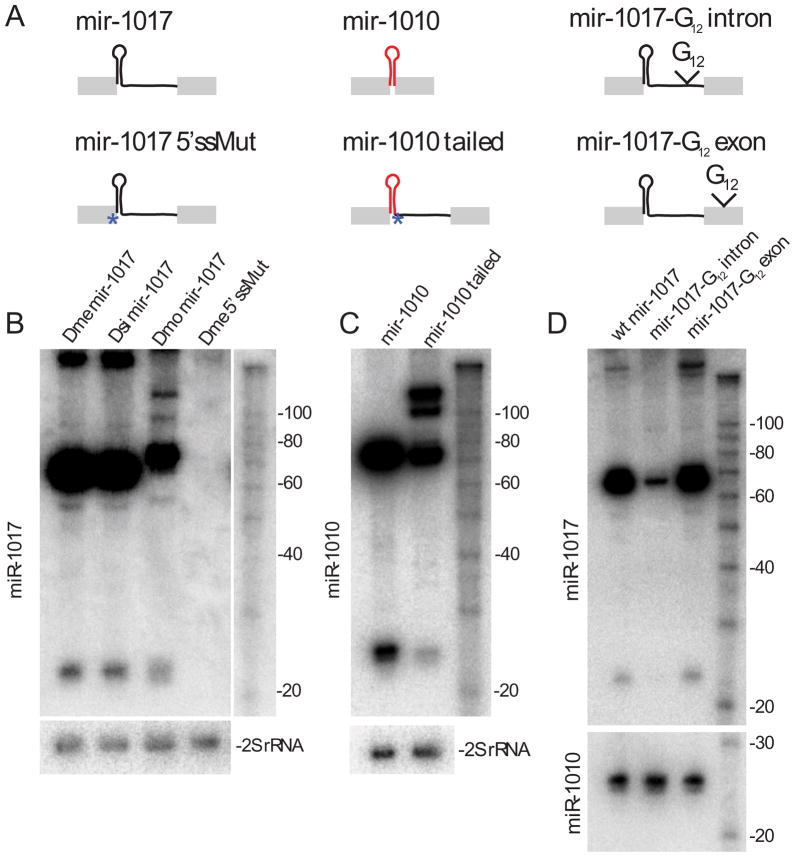Figure 2.
Structure-function analysis of tailed mirtron substrates. These panels depict Northern analysis of S2R+ cells transfected with ub-Gal4 and UAS-DsRed-mir-1017 or mir-1010 constructs. (A) Constructs used in these tests. Wild-type mir-1017 plasmids contained ~500 bp including endogenous flanking exons from D. melanogaster (Dme), D. simulans (Dsi) and D. mojavensis (Dmo); a Dme 5′ splice site mutant was generated in this context. The “mir-1010” construct expresses this mirtron from a 500 bp context, while the “mir-1010 tailed” construct contains a point mutation in its endogenous 3′ splice acceptor, fused to the mir-1017 intron tail. The last constructs contain 12 guanine residues inserted into the intron or exon of pri-mir-1017. (B) Constructs derived from all three species yielded mature miR-1017. Mutation of the GU 5′ splice donor to “CC” abolished the production of all intermediate and mature Dme miR-1017 products. (C) The conventional mir-1010 mirtron can be converted into a functional tailed mirtron. (D) Insertion of G12 into the mir-1017 intron interferes with generation of the pre-miRNA hairpin and mature product, but biogenesis is unaffected when G12 was inserted into exon sequence. In this experiment, mir-1017 and mir-1010 plasmids were cotransfected and production of mature miR-1010 was assayed as a blotting control; other experiments assayed 30 nt 2S rRNA hybridization.

